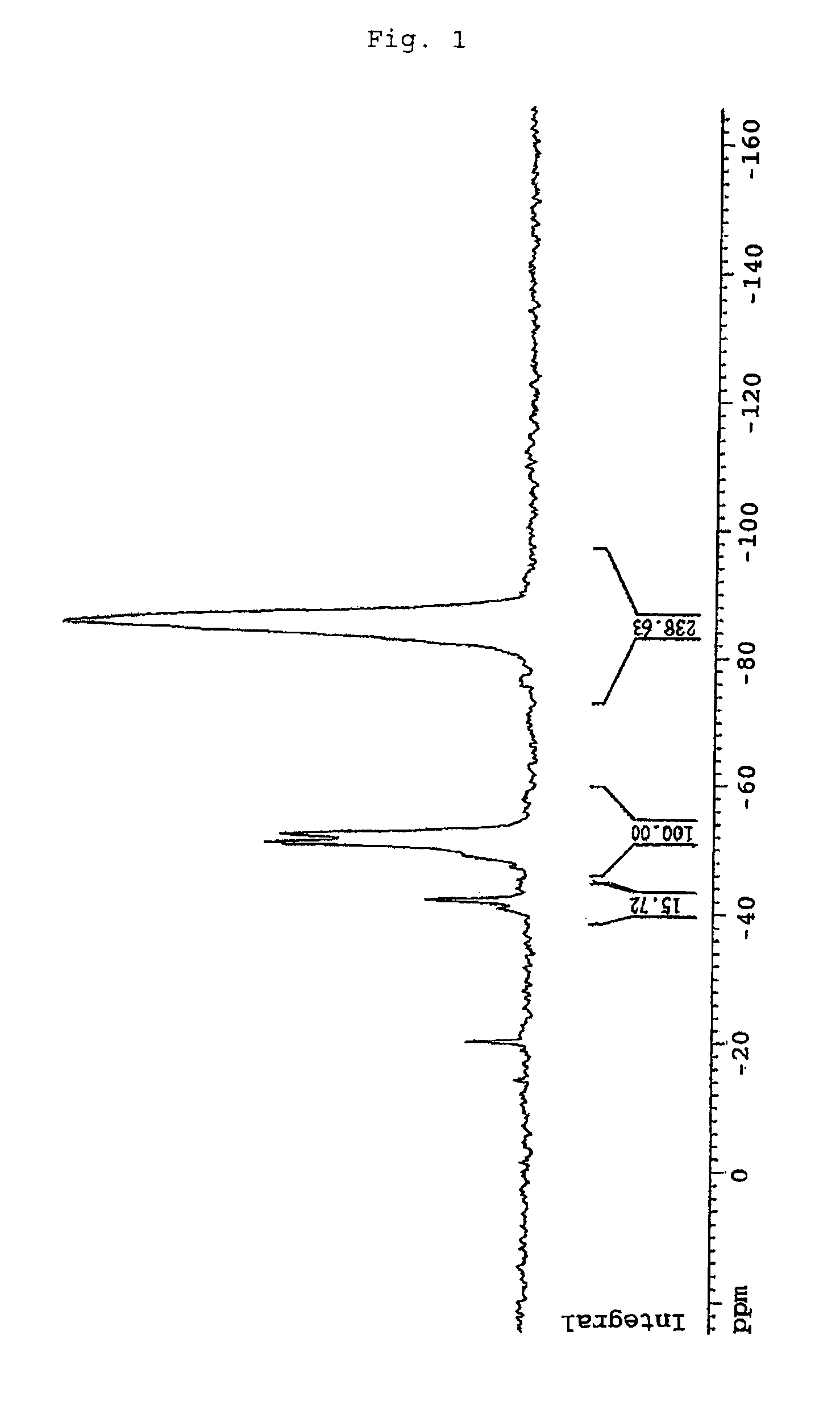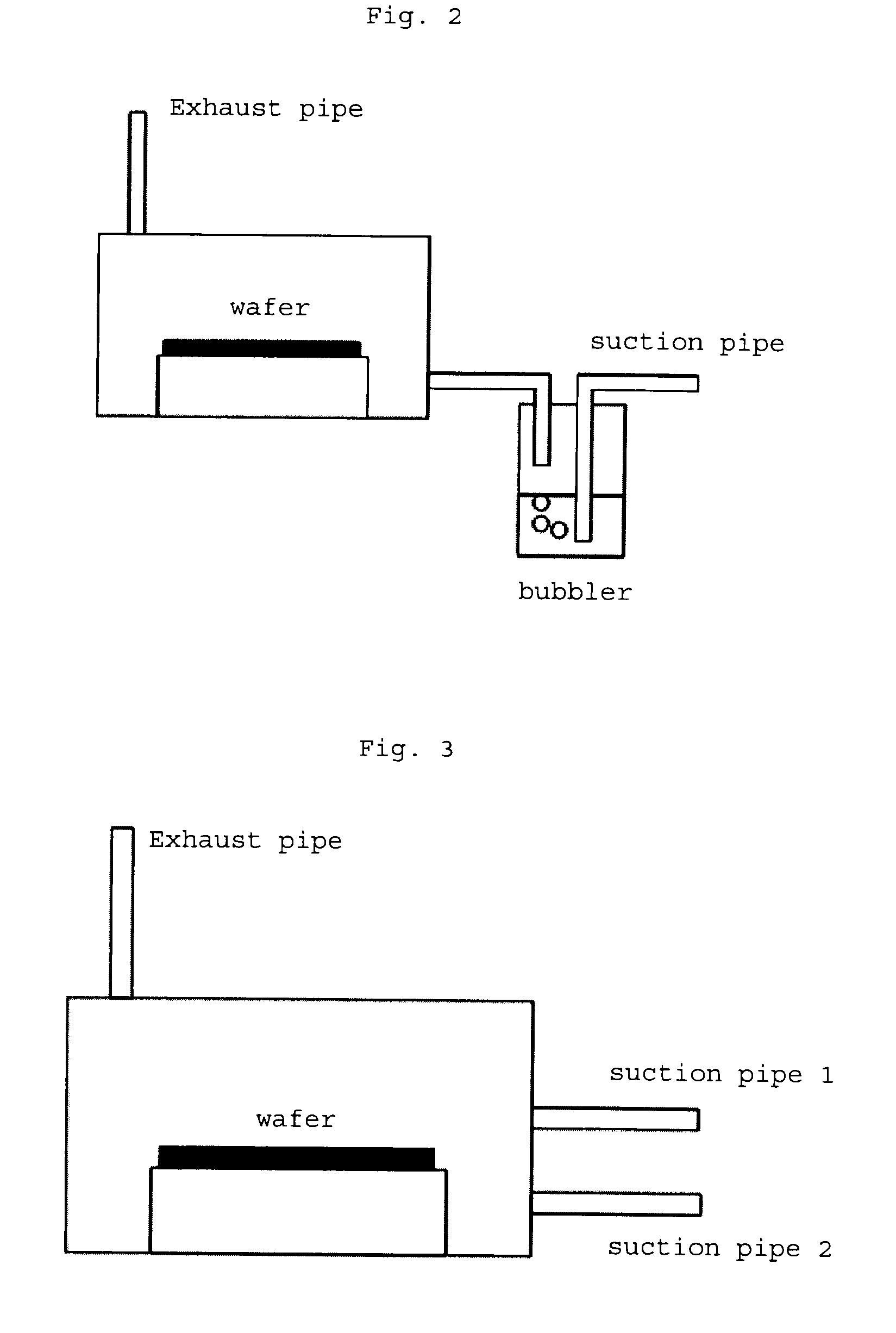Method of forming a trench isolation
- Summary
- Abstract
- Description
- Claims
- Application Information
AI Technical Summary
Benefits of technology
Problems solved by technology
Method used
Image
Examples
synthesis example 1
Synthesis Example of Silicon Compound Represented by the Above Formula (2)
[0095]A Dewer condenser, an air introduction tube, a thermometer and a septum were set in a 1-L four-necked flask, and 400 mL of n-butyl ether was fed to the flask in a nitrogen atmosphere. After this reaction system was cooled to −20° C. in a cooling bath, liquefied H2SiCl2 (84 g, 820 mmol) was injected into the flask by a syringe. Distilled water (14.8 mL, 820 mmol) was added dropwise at the same temperature (−20° C.) over 60 minutes and then stirred for 1 hour. Thereafter, the reaction liquid was transferred to a separatory funnel and washed with 400 mL of distilled water 4 times, and an n-butyl ether layer was dried with magnesium sulfate and filtered to obtain a solution containing a silicon compound (2-1). When this solution containing the silicon compound (2-1) was measured by 1H-NMR and 29Si-NMR, a plurality of peaks derived from Si—H2 were seen at 4.8 to 4.6 ppm in the 1H-NMR measurement and other pea...
synthesis example 2
Synthesis Example of Silicone Resin Represented by the Above Rational Formula (1)
[0098]125 g of the distillate containing the silicon compound (2-1) (containing 4.8 wt % of the silicon compound (2-1)) obtained in the above Synthesis Example 1, n-butyl ether (33 g) and propylene glycol monoethyl ether acetate (20 g) were added to a 300 mL three-necked flask equipped with a thermometer and a dropping funnel in the air and stirred at 0° C., and 1.32 mL of a solution prepared by dissolving triethylamine in n-butyl ether to a concentration of 0.1 wt %, distilled water (0.82 g, 45 mmol) and propylene glycol monoethyl ether acetate (20 g) were added dropwise over 10 minutes and then stirred for 2 hours.
[0099]Thereafter, 1.76 g of an n-butyl ether solution containing 0.1 wt % of oxalic acid was added to the reaction liquid to terminate the reaction. The reaction liquid was transferred to a separatory funnel and washed with distilled water 4 times, an organic layer was dried with MgSO4 and f...
synthesis example 3
[0105]350 mL of n-hexane, 40 mL of methanol, 20 mL of concentrated sulfuric acid and 48.6 g (0.3 mol) of anhydrous ferric chloride were fed to a 1,000-mL three-necked flask equipped with a dropping funnel in nitrogen, and a solution prepared by dissolving 25 g (0.185 mol) of trichlorosilane in 200 mL of n-hexane was added dropwise to the above mixture under cooling with ice over 10 hours. After the end of addition, they were further stirred at room temperature for 2 hours, the reaction liquid was transferred to a separatory funnel, n-butyl ether was added, an organic layer was washed with 100 mL of distilled water 5 times, dried with calcium chloride and potassium carbonate and filtered and removed the solvent, and further solvent substitution work by vacuum distillation was carried out with n-butyl ether three times to obtain 90 g of a homogeneous transparent n-butyl ether solution containing the silicone resin (1-2).
[0106]This solution containing the silicone resin (1-2) was measu...
PUM
| Property | Measurement | Unit |
|---|---|---|
| Temperature | aaaaa | aaaaa |
| Fraction | aaaaa | aaaaa |
| Pressure | aaaaa | aaaaa |
Abstract
Description
Claims
Application Information
 Login to view more
Login to view more - R&D Engineer
- R&D Manager
- IP Professional
- Industry Leading Data Capabilities
- Powerful AI technology
- Patent DNA Extraction
Browse by: Latest US Patents, China's latest patents, Technical Efficacy Thesaurus, Application Domain, Technology Topic.
© 2024 PatSnap. All rights reserved.Legal|Privacy policy|Modern Slavery Act Transparency Statement|Sitemap



